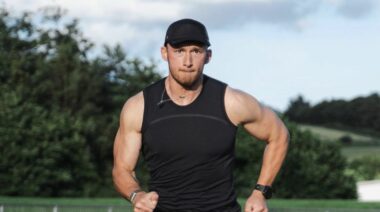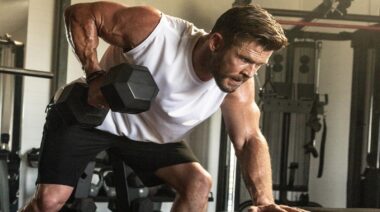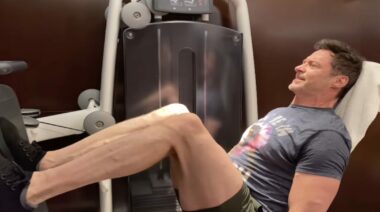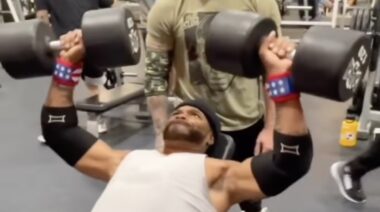Welcome back, fellow body-hackers. In my last article, we took a look at some common problem areas associated with shoulder pain and devised a few different ways to approach them. This time around I’m going to focus on the dynamic duo of shoulder impingement – the serratus anterior and the upper trap.
The Shoulder and Overhead Motion
Maybe you’ve heard someone say, “The shoulder isn’t really designed for overhead motion.” I’ve never been able to wrap my head around that idea. You’re telling me that the shoulder, the joint possessing the largest functional range of motion in the human body, simply wasn’t “designed” to use roughly 50% of that movement?
If that’s the case, then what exactly are these people talking about? Well, there happens to be an exceedingly strong correlation between individuals who spend a lot of time with their hands above their heads and shoulder injuries. However, any good scientist will tell you that correlation does not imply causation. If the link between overhead movement and shoulder injury is merely a correlation, then what’s the cause at the heart of it?
The Trapezius and Shoulder Impingement
The trapezius is a trapezoid-shaped muscle that sits in the center of your upper back. You can look at the trapezius as two triangle-shaped halves bisected by your vertebrae. There are three different sections of your trap, the upper, middle, and lower.
For our purposes we are going to focus on the upper trap, which originates from the occipital protuberance, the upper third of the superior nuchal line of the occipital bone and the ligamentum nuchae (a strip of connective tissue that runs down your cervical vertebrae) and inserts on your clavicle. Those are some fancy science words for saying the upper trap starts in the back of your head and attaches to your collarbone. Over-activation of the upper trap and under activation of the middle and lower trap is one of the most common issues that leads to shoulder pain and impingement.
It happens something like this: Initially, when we spend a lot of time with our arms overhead we start with good mechanics. Unfortunately, after a while certain muscles get tired. It’s hard for your middle and lower traps to stabilize your shoulder for hours on end. So what happens? Your upper trap has to pick up the slack. It begins to shorten in order to passively hold your shoulder in the position you keep putting it into. This requires less energy and in some ways is “easier” on your shoulder.
The problem is that once your upper trap becomes short it pulls your shoulder out of a good position. When your upper trap is tight and your shoulders are elevated it becomes increasingly difficult to fire the middle and lower traps, which means they are no longer capable of stabilizing your shoulder or assisting in scapular motion. This means that all of the demand gets re-routed to the upper trap and the vicious cycle continues.
Despite overhead motion often being the scapegoat, over-firing upper traps are painfully common even in desk workers. When you sit hunched over with your shoulders scrunched up and your head forward you are placing your traps in a shortened position. Add to that rounding of the upper back and now you’ve placed your mid and lower traps in a lengthened, disadvantageous position.
In addition to the problems you get at the shoulder (anterior pain, overhead weakness, and a predisposition to labral and rotator cuff tears), upper trap tightness can also cause debilitating headaches. It’s really not fun. I don’t recommend it. Now combine bad posture, tight traps, and overhead motion and you’ve got a recipe for disaster.
The Added Problem of the Serratus Anterior
The other missing link of shoulder stability is often the serratus anterior (SA), also known as the finger muscle (due to it’s appearance) or the boxer’s muscle (due to it’s pronounced definition in prizefighters.) Your serratus anterior originates on your ribs and inserts on the medial border of your scapulae, meaning the side closer to your spine.
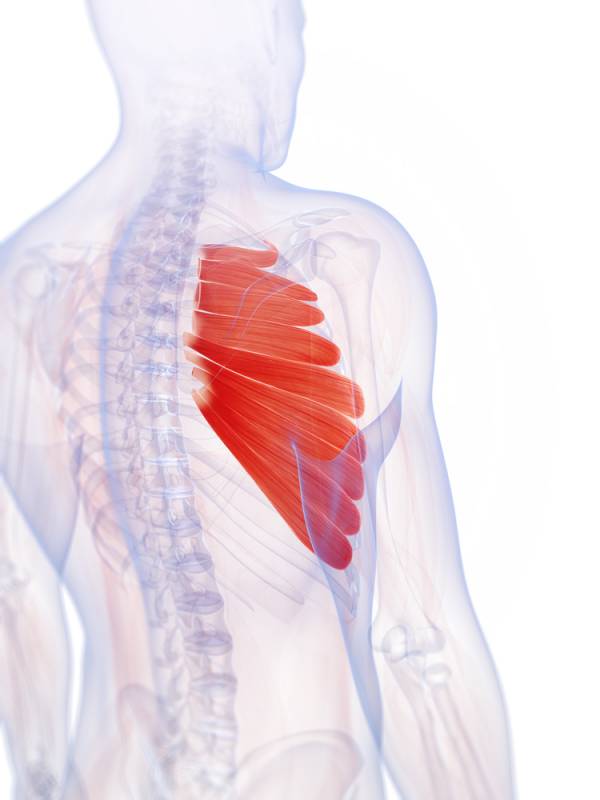
Your serratus essentially sits underneath your shoulder blade and is yet another muscle responsible for scapular motion and stability. When it fires properly, the serratus protracts your shoulder, basically sucking the scapulae right up against your ribcage. When it’s not working your scapulae can pop off your back (known as winging) and are significantly less stable.
As you can probably guess, when the SA are weak, the stabilization demand on the already over-taxed upper trap is increased yet again. Additionally, if you already have upper trap tightness your traps are probably pulling your scapulae in a position that makes it harder for the SA to fire properly. Can you see how all these problems feed into one another?
What You Can Do About It
You have to learn to stabilize your shoulders properly. If I asked you to stabilize your shoulders, what would you do? I tend to find that this is a commonly overlooked aspect of training. Knowing how to brace your shoulders is every bit as important as knowing how to brace your core. You can’t have a stable structure on a weak foundation.
My article on posture has a simple explanation of the bracing sequence to reclaim your posture. Once you’ve done that, stabilizing your shoulders is just about squeezing the muscles of your mid back (mid and lower traps and rhomboids) and using them to maintain the position of your scapulae. Remember, core integrity is the first step. If you can’t properly brace your core, it’s almost impossible to brace your shoulders.
Of course it’s easy to say that, but what if you’re having trouble actually feeling it and getting your body to respond? There are hundreds of corrective exercises designed to improve shoulder stability, but I’m going to give you a few utilizing equipment you can find at your gym or box.
Stretching Your Upper Trap
With your head facing forward, place one hand on the opposite side of your head and pull your ear towards your shoulder. Make sure you are not rotating your neck as you do this. If you want to get really nasty and you have a friend you can trust, have your friend pin down a particularly tight part of your trap either with his or her fingers or a golf ball or lacrosse ball – then stretch. You can also tape a lacrosse ball to the underside of a barbell in a squat rack and use that to self-stretch the trap. Same basic principle applies: pin the tissue, then move your arms and neck to stretch the muscle.

Physio-Ball or Ring Stabilizations
You can perform physio-ball stabilizations with either two arms or one. All you’re doing is getting your shoulders into good position, bracing them, and then placing your hands on top of a physio-ball against a wall in a push up position.
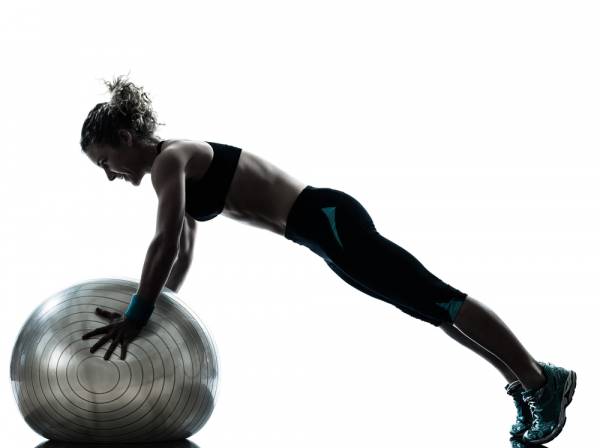
You can progress from two arms to one arm on the wall, and when that becomes easy you can perform the exercise with two arms on the floor. Simply hold the position for as long as you can. Your set is over when your shoulders drop out of position, not when you can’t hold yourself up anymore. You have to be mindful of the difference or you could be simply reinforcing the issues that are already present. Build up to three sets of one minute.
If you want to get really nasty, gymnastics rings are fantastic for fostering shoulder stability. You can also easily adjust the angle and therefore the loading on your shoulder, all the way down to a full push up position. Again, work up to three sets of a minute, paying careful attention to the position of your shoulders.
The Strict Press
I think the best way to foster stable shoulders is the king of all shoulder exercises -the strict press. You might think I’m crazy, but think about it like a deadlift: yes, it can be terrible for your back when done incorrectly, but done properly the deadlift is arguably the most profound corrective exercise for posture. The strict press is the same for your shoulders. As long as you don’t have pain throughout the movement, starting light and paying strict attention to proper form will teach the shoulders how to stay stable in no time. Maybe you can even get those handstand pushups you’ve always wanted.
This concludes the second installment of my two-part series on how to deal with shoulder pain. Once again, mindfulness of your movements trumps all. The best solution for rounded shoulders and slouched posture is to not sit and walk around with rounded shoulders and a slouched posture.
Just remember, we should all be able to do basic maintenance on ourselves, but if you have persistent pain that is not changing at all and you have for weeks, you should seek proper medical attention. Make sure to take care of your shoulders and they will take care of you. Good luck.
Photos courtesy of Shutterstock.

